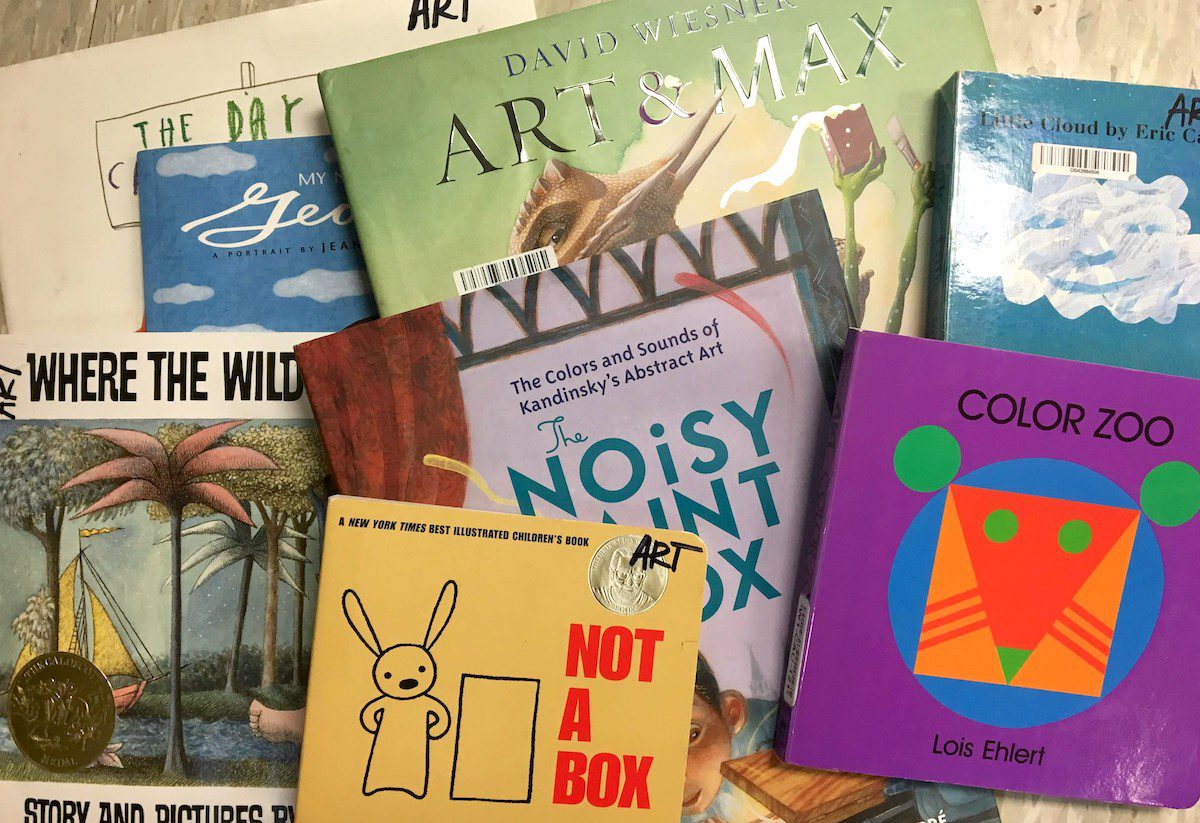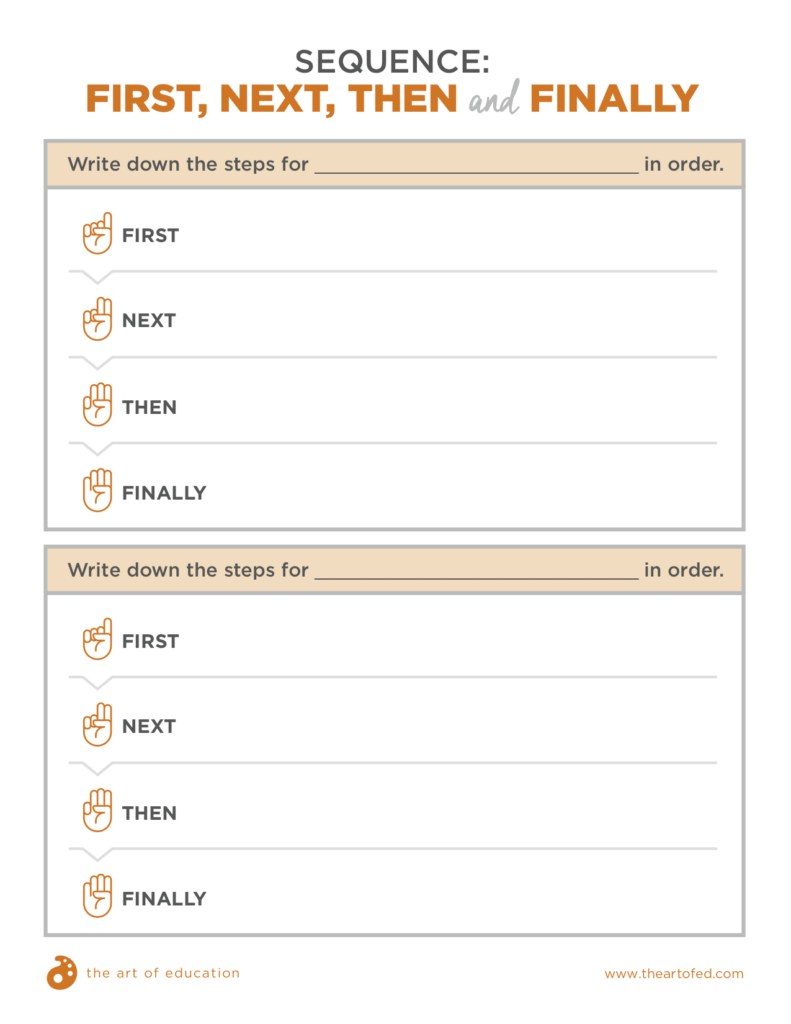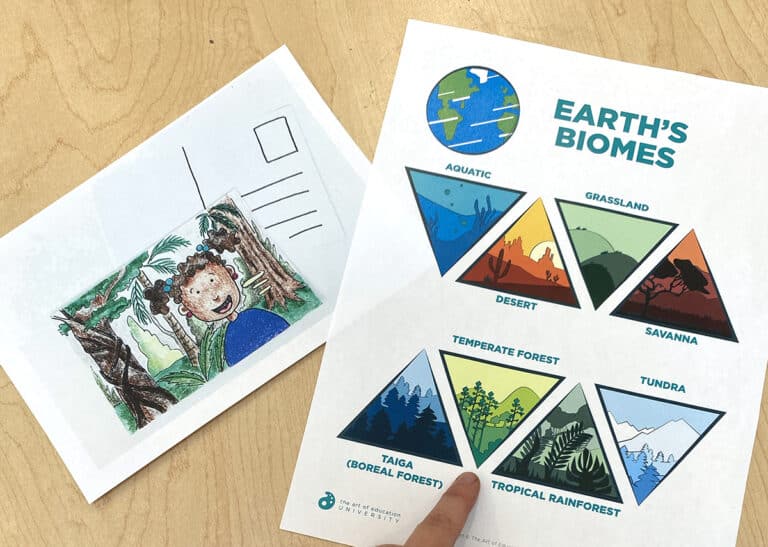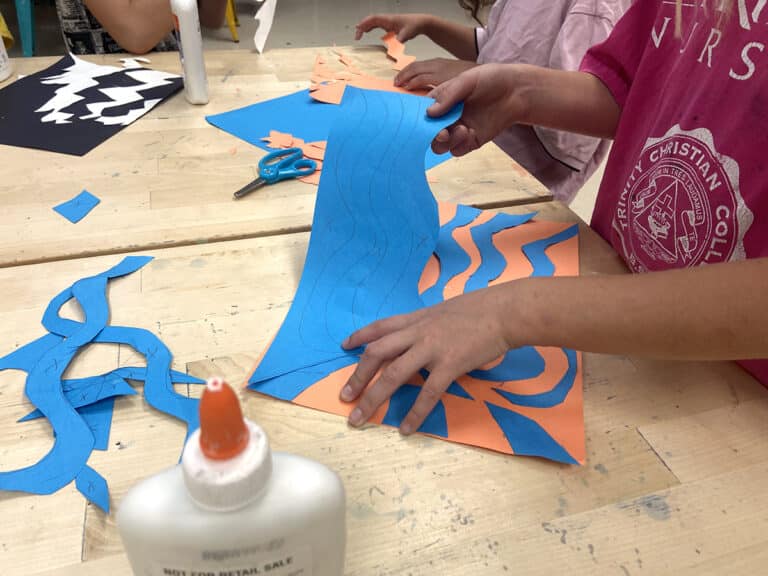With good reason, it seems like every school district across the nation has a movement toward a literacy action plan. It can feel like a “push” for literacy bombards many teacher training days and takes the front seat to many initiatives. However, it is important to define literacy as more than being able to read and write. It is about being able to express oneself and interpret the world around us using written, spoken, or heard language. Because of its broad nature, literacy is like art. It connects all the other subject areas at some point or another.
As art educators, we are not only responsible for the creative practice of our students, but also literacy practice as well.
The good news is that literacy practice in the art room doesn’t have to be some big fancy initiative involving laborious training. We can use what we are already doing with our students and add a literacy twist.
As long as students are engaging writing, reading, listening, or speaking skills as they interact with their artwork, they are engaging in literacy skills. It is a win-win.
Here are 5 easy ways to bring literacy into your art classroom today.
1. Use Exit Slips
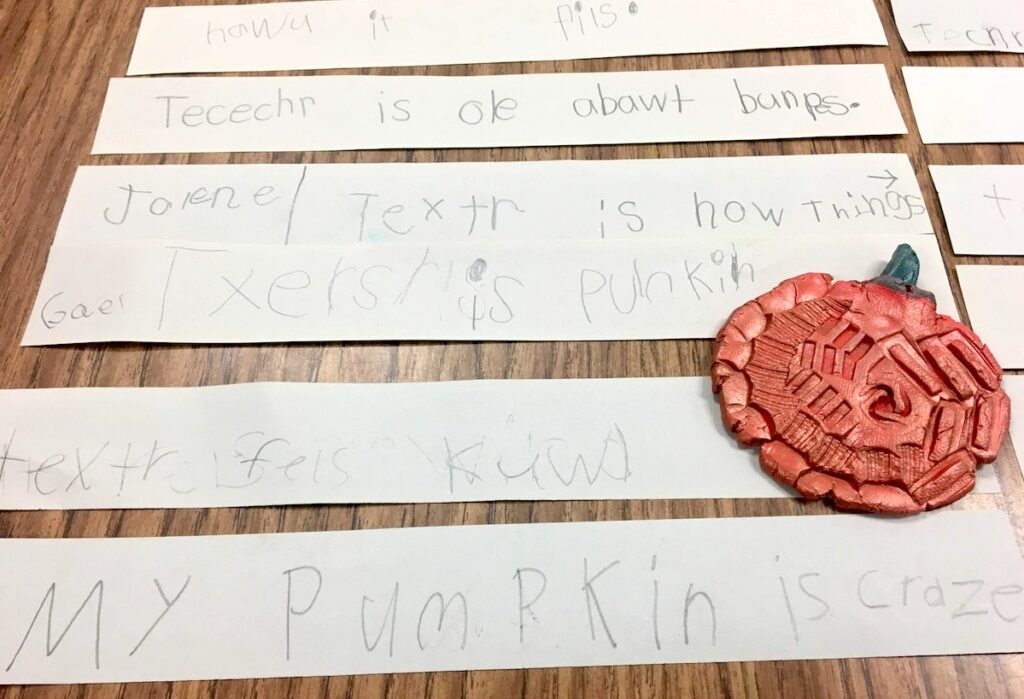
Before students leave the art classroom, have them write a reflection or specific information learned during the class on a small piece of paper. Students will hand in this “slip” before they “exit.” An effective method (especially for younger artists) is to provide a slip with a starter sentence for students to fill in.
For instance:
- “Today I created…”
- “Two examples of complementary colors are…”
- “One fact about Vincent Van Gogh I remember is…”
Exit slips are very effective, not only for student reflection and recall but also for teacher reflection and planning.
For example, if a lesson with a focus on warm versus cool colors results in hardly any students writing down correct examples of warm or cool colors on their exit slips, you have reviewing to do. Exit slips are also a meaningful way to spend those last few minutes of class when students’ focus may require redirection.
You can find three downloadable exit slip examples in the Literacy Strategies in the Art Room PRO Learning Pack. In this resource, I also share many more ideas and specific lessons about how to bring literacy into the classroom.
2. Curate an Art Book Library
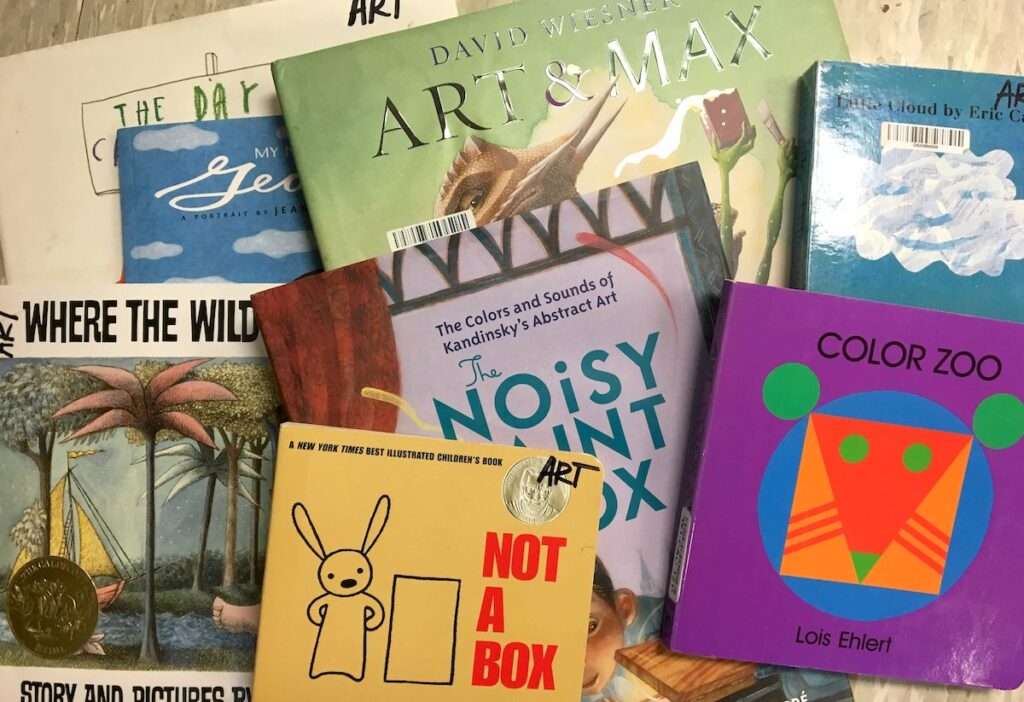
Many art rooms have “free drawing,” art games, and/or building activities to keep students busy and creative when they finish a task. An art book library encourages students to take, look, and read as they please. It can pique their interest and is a great connection between art and literacy. It is also a great way for students to exercise choice. As a bonus, it is a teaching library for lesson inspiration and planning. Finally, students LOVE to revisit books used in lessons for previous projects.
Check out the following lists to get you started.
- 10 New Books You Need in Your Classroom Library
- 10 Books Every Art Teacher Needs
- 70 Children’s Books About Famous Artists
3. Have Students Do Sequence Writing
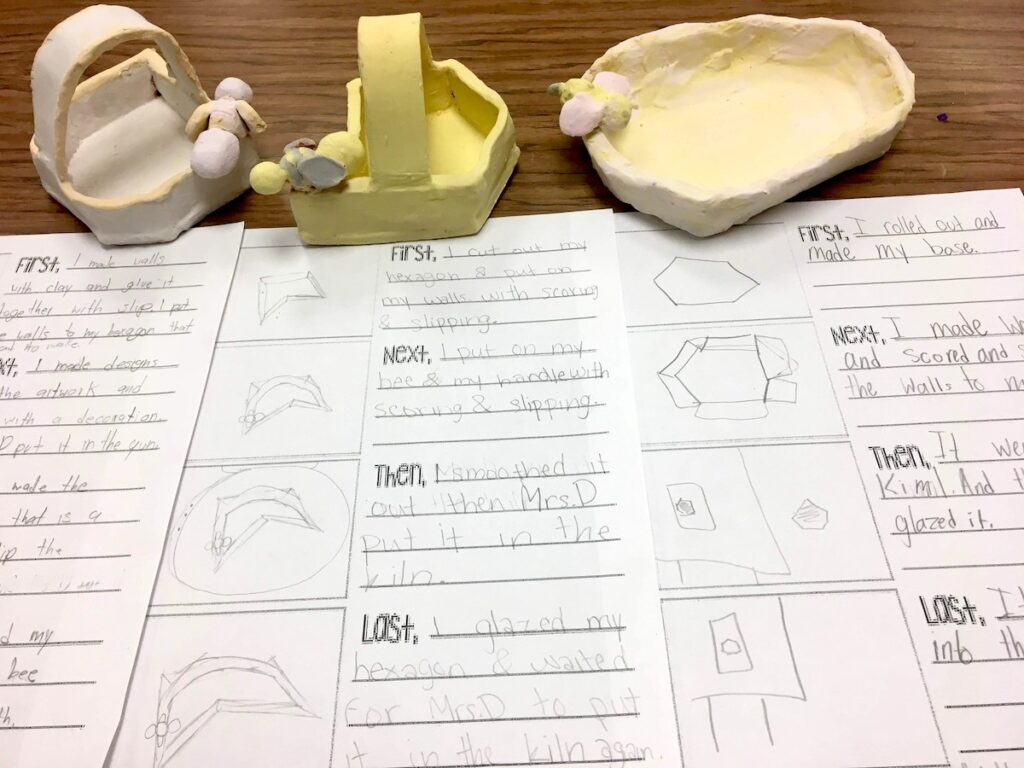
Even in the simplest of art projects, there are steps. As art educators, we are teaching students concepts, techniques, and processes step-by-step. Students are much more likely to remember the steps when they write them down.
As they write, they practice the literacy skill of sequencing. “First, Next, Then, and Finally” written statements are very insightful and informational. Sequence writing can also act as both formative and summative assessment tools for you and your students. For example, if you ask your students to sequence the act of joining two pieces of clay together and they get the order wrong, you know you need to revisit the concept.
You can use the download below to get started with this activity in your classroom right away.
4. Assign Artist Statements
It may seem obvious, but asking students to write about their artmaking is a way of engaging in literacy. Artist statements accomplish three tasks essential to art and literacy. First, students are using language to define the visual work they have created, thus adding depth to their creativity. Second, by using proper sentence structure and word choice, students are figuring out the best way to communicate about their creative work to others. Finally, artist statements show you what students have learned, making them an effective assessment tool.
There’s a great End-of-Project Reflection available in the Peer Feedback Strategies PRO Learning Pack that would be the perfect tool to use for an artist statement. You can also find more specific strategies for elementary kiddos in 5 Hints for Helping Young Students Generate Artist Statements.
5. Incorporate Storytelling
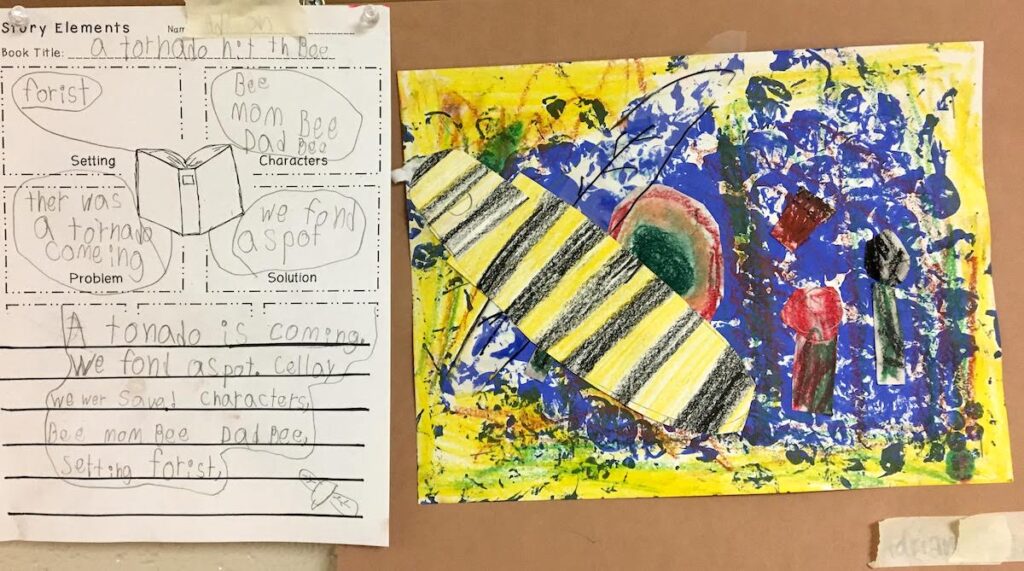
“A picture is worth a thousand words…” Right? Any project that has a central focal point of a person, animal, or character can be a catalyst for an original story told by the artists themselves. Young artists, especially those at the elementary level, love to use their imagination to make up their own narratives and descriptions.
Using graphic organizers to help scaffold young artists’ ideas is very helpful to get the story off the ground. Works with people, animals, or imaginary creatures are great places to start. Ask students to give the subject of their artwork a name.
Then, give them some writing prompts.
- Where did they come from?
- Where are they going?
- Who are their friends?
- What problem do they run into?
- How is it resolved?
- What happens next?
Both you and your students will enjoy the variety of anecdotes that can come from using their own storytelling skills. Storytelling is also an excellent way to tap into another form of creativity, this time in writing. For instance, a student’s drawing can be hard to decipher because of their level of motor control. But once they clarify that the large black blob in the corner is, for instance, a spider who ate too many flies and now needs to take a nap, you’ve cracked the code. The students are using their creativity and building their literacy skills at the same time.
Art and literacy can be parallel concepts in the art classroom. At first, making intentional connections may seem like more work. But often, providing opportunities for students to practice their literacy skills with existing artmaking units may be easier than you think.
What literacy connections do you use in your classroom?
How are you effectively getting your students to read, write, speak, and listen about their artwork or that of others?
Magazine articles and podcasts are opinions of professional education contributors and do not necessarily represent the position of the Art of Education University (AOEU) or its academic offerings. Contributors use terms in the way they are most often talked about in the scope of their educational experiences.
